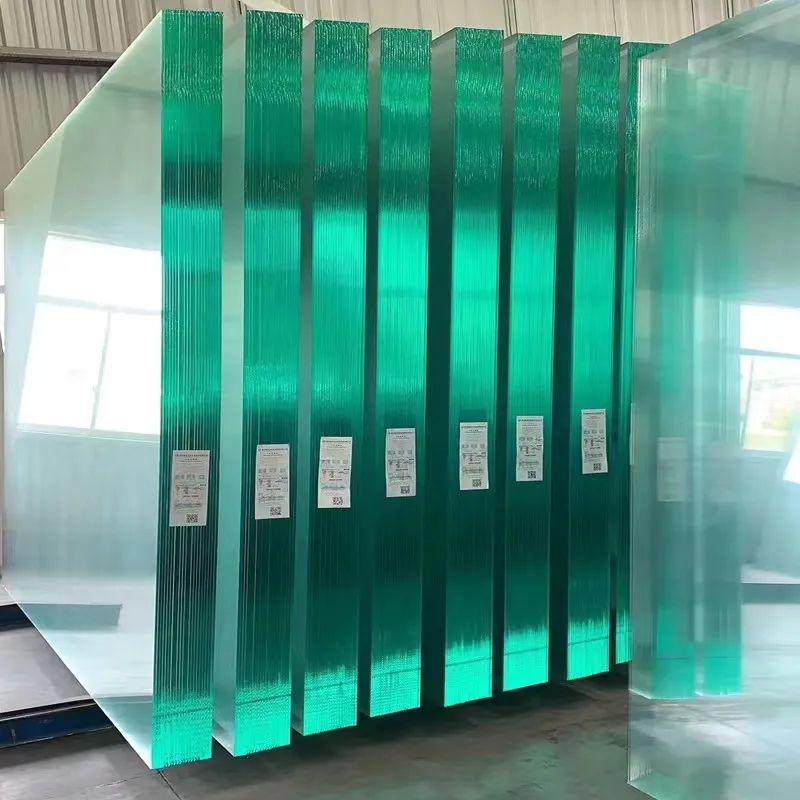The Dynamics of Hardened Glass Pricing
Hardened glass, also known as tempered glass, has become an increasingly popular choice in various industries due to its exceptional strength and safety features. Its unique properties make it an ideal material for applications ranging from architectural designs to automotive manufacturing. However, understanding the pricing dynamics of hardened glass is crucial for consumers, manufacturers, and builders alike. This article explores the factors that influence hardened glass prices, its market demand, and future trends.
What is Hardened Glass?
Hardened glass is created by heating standard glass to high temperatures and then rapidly cooling it. This process increases the glass's strength and makes it more resistant to thermal stress and impact. Due to these desirable characteristics, hardened glass is extensively used in areas that require safety, such as shower enclosures, glass doors, and windows, as well as in facades and partitions in commercial buildings.
Factors Affecting Hardened Glass Prices
1. Raw Material Costs The primary component of glass is silica, alongside other materials such as soda ash and limestone. Fluctuations in the prices of these raw materials significantly impact the cost of production for hardened glass. For instance, global supply chain disruptions or increased demand in other industries can drive prices higher.
2. Manufacturing Process The production of hardened glass involves energy-intensive processes, including high-temperature heating. Energy costs, therefore, play a vital role in determining prices. As energy prices fluctuate on a global scale, the cost of manufacturing tempered glass can vary significantly.
3. Thickness and Size The thickness and dimensions of the glass also influence its price. Thicker glass provides higher strength and is thus more expensive. Custom sizes, which require specialized production techniques, can also result in increased pricing.
4. Market Demand Demand for hardened glass is growing, especially in the construction and automotive sectors. With the rising trend of glass facades in buildings and innovative vehicle designs promoting safety, the demand surge directly influences pricing. In markets where environmentally friendly and aesthetically pleasing designs are prioritized, tempered glass becomes an essential material, further increasing its demand and associated costs.
hardened glass price
5. Regulations and Standards Safety and building regulations can affect pricing as well. Specific standards for tempered glass must be met, which can involve additional testing and certification costs. Manufacturers must comply with local and international regulations, which may require investment in more advanced technology, thereby affecting the final price.
6. Technological Advancements New manufacturing techniques and innovations can also impact prices. For instance, advancements that enhance the characteristics of tempered glass—such as increased thermal resistance or UV protection—may justify higher costs. However, they can also lead to economies of scale if widely adopted, potentially reducing prices in the long run.
Market Trends and Future Outlook
The market for hardened glass is expected to continue its growth trajectory. Urbanization, increasing construction activities, and a growing focus on sustainable materials are likely to create further demand for tempered glass. Moreover, the recovery of the global economy post-pandemic is expected to boost construction projects, which may also elevate the demand for hardened glass.
Another trend is the customization of glass products, leading to a higher willingness among consumers to pay a premium for tailored solutions. This shift towards customization may increase the average price of hardened glass in the coming years.
Sustainability is another significant factor driving change in the industry. Manufacturers are exploring ways to recycle and reprocess glass, which could not only affect prices but also meet the growing consumer demand for eco-friendly building materials.
Conclusion
Understanding the pricing dynamics of hardened glass is essential for stakeholders across various industries. As raw material costs fluctuate and demand continues to rise, the price of tempered glass will likely remain volatile. However, with opportunities for technological innovation and the emphasis on sustainable practices, the future of hardened glass pricing holds both challenges and prospects. Keeping abreast of these trends will be vital for buyers and suppliers to make informed decisions in a constantly evolving market.
 Afrikaans
Afrikaans  Albanian
Albanian  Amharic
Amharic  Arabic
Arabic  Armenian
Armenian  Azerbaijani
Azerbaijani  Basque
Basque  Belarusian
Belarusian  Bengali
Bengali  Bosnian
Bosnian  Bulgarian
Bulgarian  Catalan
Catalan  Cebuano
Cebuano  Corsican
Corsican  Croatian
Croatian  Czech
Czech  Danish
Danish  Dutch
Dutch  English
English  Esperanto
Esperanto  Estonian
Estonian  Finnish
Finnish  French
French  Frisian
Frisian  Galician
Galician  Georgian
Georgian  German
German  Greek
Greek  Gujarati
Gujarati  Haitian Creole
Haitian Creole  hausa
hausa  hawaiian
hawaiian  Hebrew
Hebrew  Hindi
Hindi  Miao
Miao  Hungarian
Hungarian  Icelandic
Icelandic  igbo
igbo  Indonesian
Indonesian  irish
irish  Italian
Italian  Japanese
Japanese  Javanese
Javanese  Kannada
Kannada  kazakh
kazakh  Khmer
Khmer  Rwandese
Rwandese  Korean
Korean  Kurdish
Kurdish  Kyrgyz
Kyrgyz  Lao
Lao  Latin
Latin  Latvian
Latvian  Lithuanian
Lithuanian  Luxembourgish
Luxembourgish  Macedonian
Macedonian  Malgashi
Malgashi  Malay
Malay  Malayalam
Malayalam  Maltese
Maltese  Maori
Maori  Marathi
Marathi  Mongolian
Mongolian  Myanmar
Myanmar  Nepali
Nepali  Norwegian
Norwegian  Norwegian
Norwegian  Occitan
Occitan  Pashto
Pashto  Persian
Persian  Polish
Polish  Portuguese
Portuguese  Punjabi
Punjabi  Romanian
Romanian  Russian
Russian  Samoan
Samoan  Scottish Gaelic
Scottish Gaelic  Serbian
Serbian  Sesotho
Sesotho  Shona
Shona  Sindhi
Sindhi  Sinhala
Sinhala  Slovak
Slovak  Slovenian
Slovenian  Somali
Somali  Spanish
Spanish  Sundanese
Sundanese  Swahili
Swahili  Swedish
Swedish  Tagalog
Tagalog  Tajik
Tajik  Tamil
Tamil  Tatar
Tatar  Telugu
Telugu  Thai
Thai  Turkish
Turkish  Turkmen
Turkmen  Ukrainian
Ukrainian  Urdu
Urdu  Uighur
Uighur  Uzbek
Uzbek  Vietnamese
Vietnamese  Welsh
Welsh  Bantu
Bantu  Yiddish
Yiddish  Yoruba
Yoruba  Zulu
Zulu 

